When the river rose: 10 years ago, flood of 2008 overwhelmed Charles City
By Bob Steenson, bsteenson@charlescitypress.com
The flood of 1993 and the flood of 2008 — which one you count as the worst flood in the recorded history of the state probably depends on where you were when they occurred.
The 1993 flood resulted in 17 fatalities and around $2.7 billion in damage — almost $4.7 billion in 2018 inflation-adjusted dollars.
Yet, for those who experienced it firsthand, the flood of 2008 was more intense.
While the 1993 flood lasted longer, covered a larger area and impacted more people, including the metro Des Moines area, the flood of 2008 smashed into cities along the Cedar River and Iowa River basins, washing away homes, businesses, crops and infrastructure.
The river levels in 2008 set new records — in many cases breaking records that had been set in 1993.
Federal disaster areas were declared in 85 of Iowa’s 99 counties in 2008. Total statewide damage was estimated at $10 billion — more than $11.6 billion in 2018 dollars.
At the height of the flooding in mid-June, about 2½ million to 3 million acres of corn and beans were underwater.
Charles City was the first in line to feel the impact when the rain started falling and the Cedar River started rising in early June 2008.
The Cedar would eventually crest at 25.33 feet in Charles City about noon on Monday, June 9, breaking the previous record set in 1999 by more than 2½ feet, according to the National Weather Service.
“Torrential rains on Sunday, both locally and to the north, turned a bad situation worse as major flooding broke out all over Floyd County and other parts of Northern Iowa,” the Press reported in a story on Monday, June 9.
The Initial forecast for the Cedar River after the rain began was 15 feet — 3 feet above flood stage, but the National Weather Service soon increased that estimate to 18 feet, “or greater.”
By 5:45 a.m. Sunday, June 8, the river level was at 19.4 feet and still rising.
“At one point it was rising a foot every 45 minutes,” said Eric Whipple, who was then acting public information officer for Floyd County Emergency Management, and who is now the Charles City fire chief.
“The water rose too quickly for sandbagging at some places, but a massive effort was thrown together in a short time to save others. A public plea for volunteers to help fill and transport sandbags from the Allied Redi-Mix plant on 11th Street was answered by an army of all ages,” the Press reported.
Barricades were being set up around town and throughout the county as more and more roadways disappeared underwater.
Brantingham bridge was closed a little after 7 p.m. Sunday, June 8, as floodwaters crept over Clark Street. By 11 p.m., the river also threatened the Main Street bridge, forcing that bridge to be closed. It was the only time both bridges had been closed, effectively cutting the community in two to vehicle traffic.
“The water wasn’t over the roadway but there are concerns about the bridge’s structural integrity at this point,” Whipple told the Press then about the Main Street span. “We don’t want to take any chances.”
By Monday morning even the pedestrian bridge was closed, completing the city’s bifurcation and requiring a trip through Floyd for anyone needing to get from one side of Charles City to the other.
On Sunday night another bridge, one less vital for transportation but every bit as important to the community — the historic Suspension Bridge — collapsed as raging floodwater washed over the deck and pulled down the supporting structure.
Anne Litterer watched from her driveway at 201 N. Illinois, about 250 yards north of the bridge, as the structure collapsed at about 11 p.m.
The wooden and wire bridge tossed, tussled, buckled and bent before the force of the raging river became too much for the structure to hold, the Press reported at the time.
“It creaked quite a bit,” Litterer said. “It actually flexed the front part of the bridge. The side toward Riverside was up in the air as the water was pushing through it. The water was pushing through it and the water was going over it.”
The lights on the Suspension Bridge stayed on until the very end, she said.
“There was a lot of noise and things like that and the lights were flickering on and off and then it all just kind of went out at once,” Litterer said at the time.
Community members expressed shock and sorrow that the popular community icon was gone.
“It’s a sad situation today in Charles City,” said Gene Parson.
“I cried when I heard about the bridge, it was part of my history,” said Diana Smith, who said she used to walk the bridge every day as a kid.
“My heart is just sick,” she said.
As rising water forced the Fire Department to abandon its building, the department and ambulance crews set up equipment on both sides of the river to be able to respond to emergencies.
Then-City Administrator Tom Brownlow reported that the city’s water and wastewater facilities were still protected and operating. That was a better situation than in the much larger Mason City to the west, where that community’s water system was shut down for three days.
Whipple and Bridget Moe, the Floyd County emergency management director, reported that more than 40,000 sandbags had been distributed throughout Floyd County on Sunday, including 25,000 in Charles City alone. As supplies ran out locally, more bags were brought in from Cedar Rapids and Mason City.
The first structure bagged and protected had been the wastewater treatment plant. Brownlaw said he had to make a decision to protect that plant before allowing people to take sandbags for private property.
More than 500 homes in Charles City were directly affected by the flooding, Whipple said, and there were reports of collapsed basements.
People who had lived in the community all their lives and never seen floodwater reach their property were experiencing it for the first time.
“Between 75-100 residents have been evacuated in Charles City overnight (Sunday) and this morning by Fire Department personnel,” Whipple reported. “Evacuations started at 5 p.m. with Lion’s Field and then Cedar Circle. Court and Clark streets have been hard hit, as well.”
Shelters were set up at the YMCA on the north side of the river and at St. John Lutheran Church on the south side.
Whipple said that all of the evacuations were voluntary and that the rescues were conducted with boats or fire trucks.
As businesses and homeowners tried their best to protect their property, an army of volunteers gathered at Immaculate Conception Church, piling sandbags between the church and the river and moving everything possible out of the basement.
When people got back in to clean up the mess at the end of the week, then pastor Fr. Carl Ries said it “smelled like manure.”
Shelley Pahnisch and her family’s house stood right in the middle of the battleground at 1204 Clark St., directly across from the hard hit I.C. School.
Pahnisch told the Press that the main floor of her house escaped relatively unscathed, as it was the highest spot in the otherwise low-lying neighborhood just south of the downtown corridor.
The basement, however, was a different story. Roughly 6 feet of water stood in it at its peak.
“We lost everything in the basement — the washing machine, furnace, one bedroom,” Shelley told the Press.
Businesses, too, were swamped. Plaza Mexico and Dairy Queen reported 2½ feet of water inside as the buildings stood surrounded by floodwater. McDonald’s reported 18 inches.
Retlaw’s Riverside Sports Bar & Grill — now The Pub on the Cedar — had 6 inches of water inside on Monday, but would manage to clean up enough to be open again by the end of the week.
“Given the fact that a lot of restaurants in town have been closed, I think people will be ready to come back out,” said then-Retlaw’s manager Stacy Yezek.
At New Age Reality, owner Donna Pierce raced in to save as much as she could before water took over the office.
“I came and put the computer up and as much as I could,” Pierce said at the time. “I put things on desks and (the water) went over the desks, but I put the computer way up.”
As the situation escalated and the extent of the damage became known, politicians poured into the area, including Gov. Chet Culver and U.S. Sens. Tom Harkin and Chuck Grassley. All promised aid to help rebuild the community.
Mark Kuhn, a Charles City farmer and now county supervisor who was a state representative at the time, met with Culver Monday afternoon, June 9, after Culver had helicoptered in. Kuhn said a request had been made for Iowa National Guard troops to assist in Charles City for the remainder of the week.
By Tuesday the river levels were falling steadily, and by Wednesday had dropped below the 12-foot flood stage. On Tuesday morning Brantingham bridge was reopened. The Main Street bridge remained closed until Wednesday, after it could be inspected for damage.
An estimated 1,000 homes had been affected by the flooding across Floyd County.
Eventually the city would purchase 17 homes in the floodplain through a Community Development Block Grant Hazard Mitigation program, and tear them down. But hundreds of other homes and dozens of businesses suffered water damage ranging from annoying to annihilation.
Forty years earlier, in 1968, a tornado had torn through Charles City. Now, in 2008, a flood had done its worst.
In the end, both natural disasters caused the people of Charles City to band together, recover and rebuild.

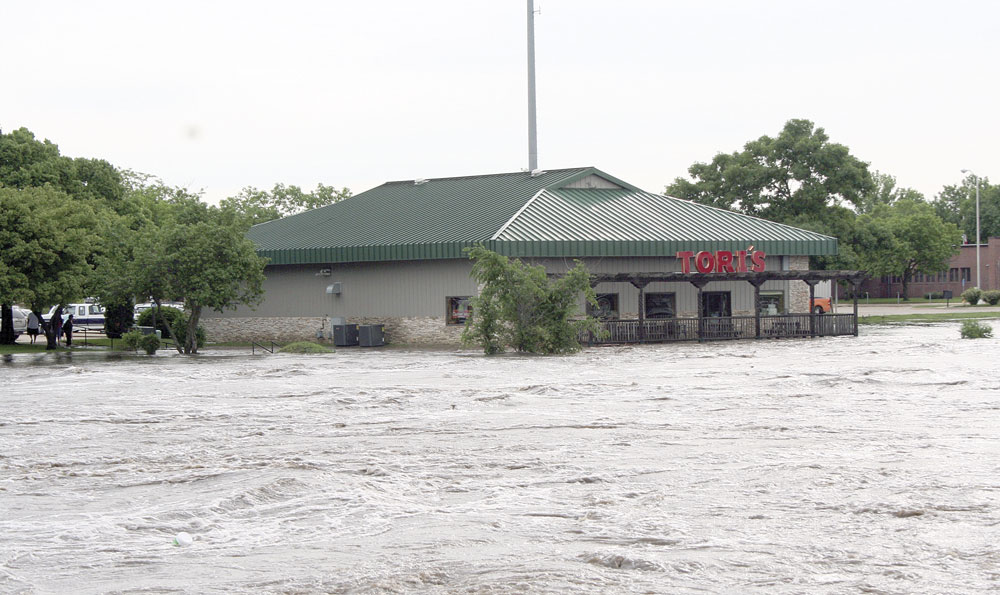
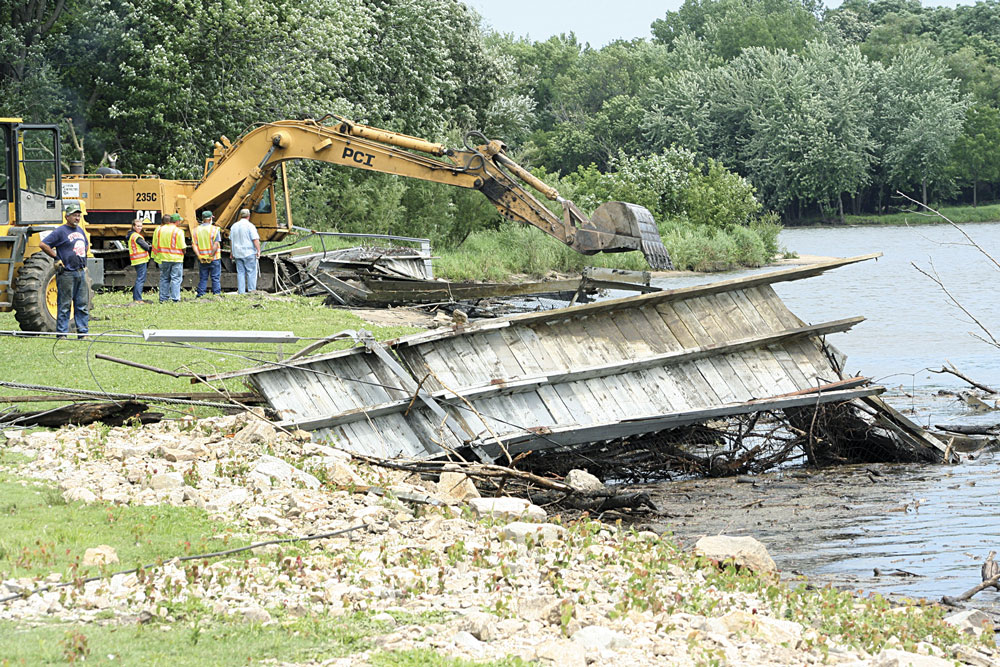
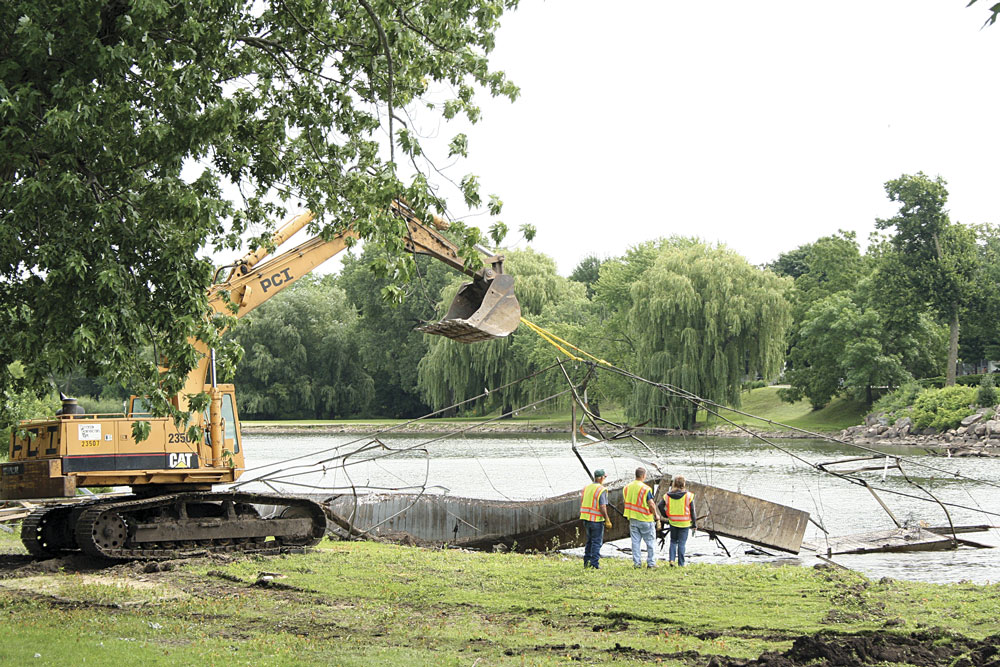
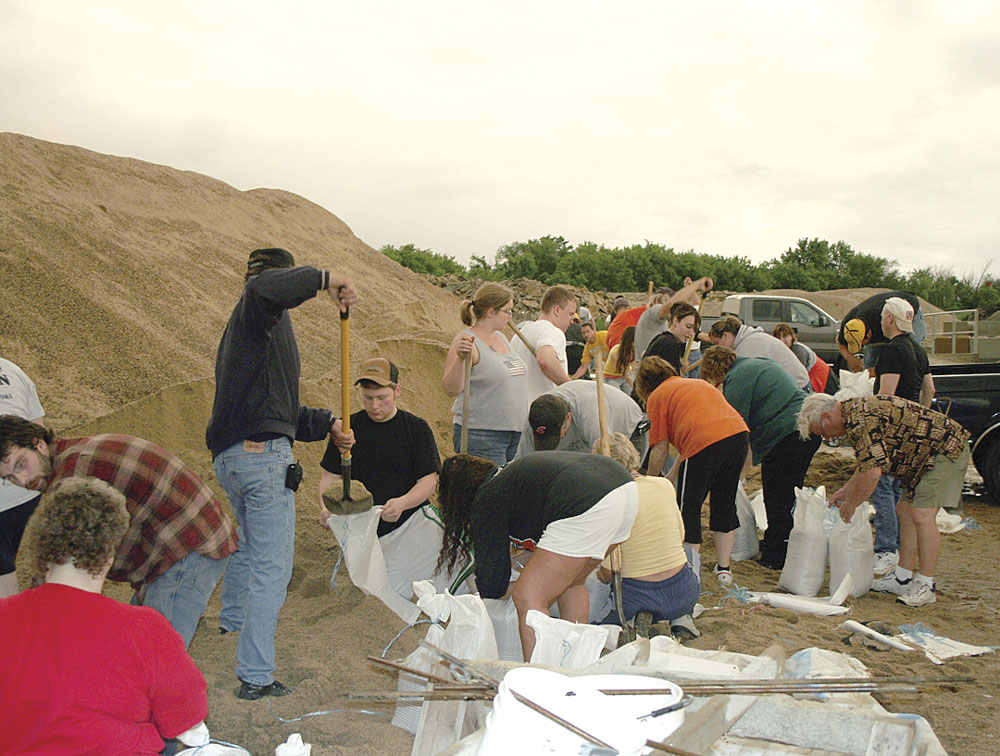
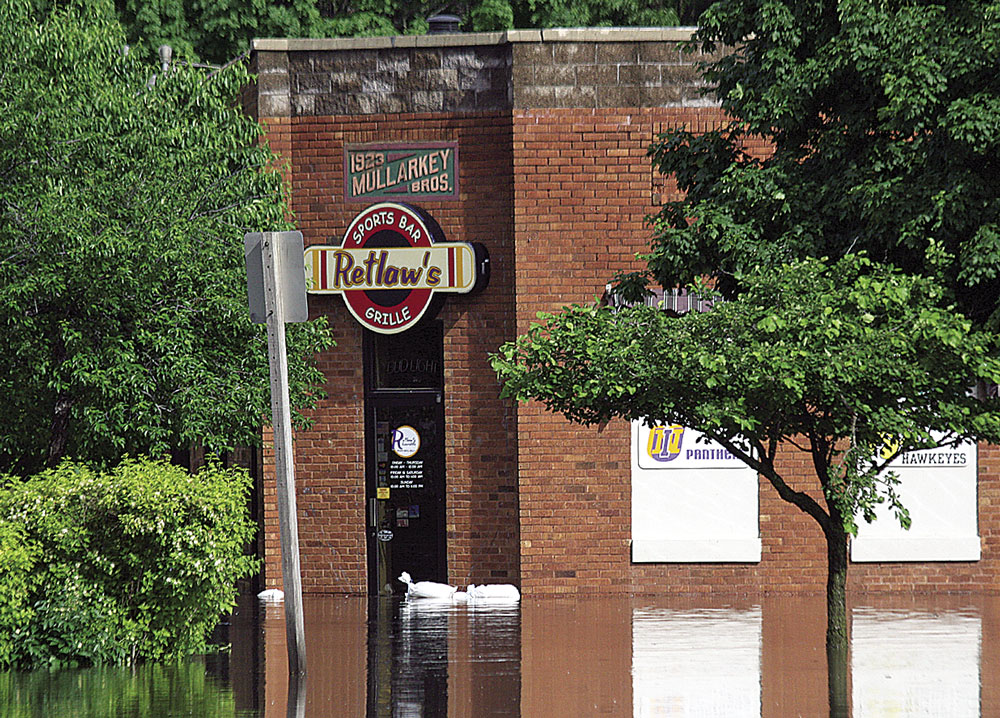
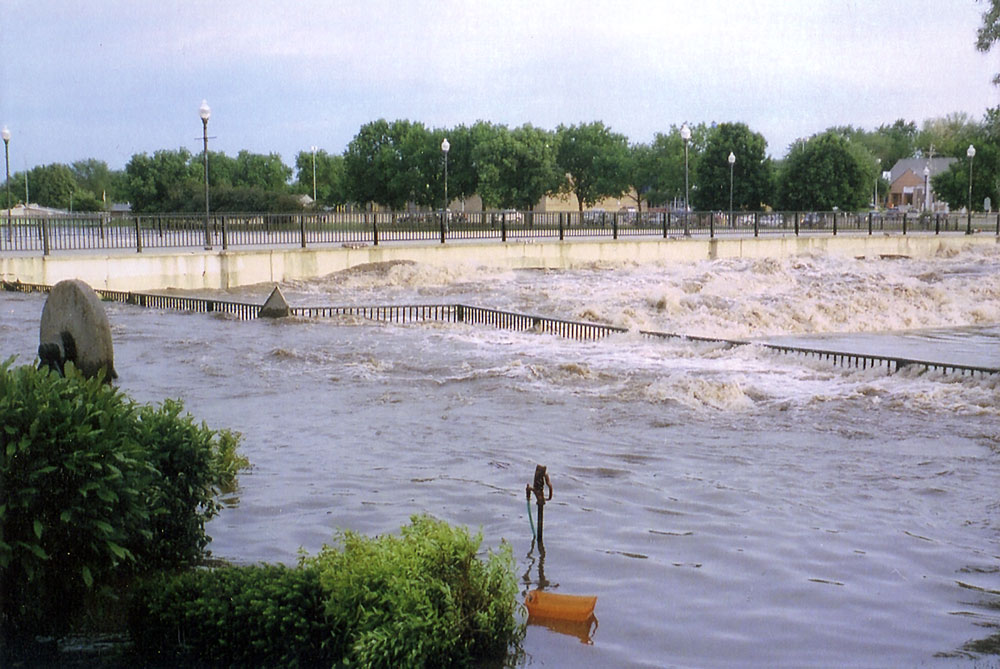
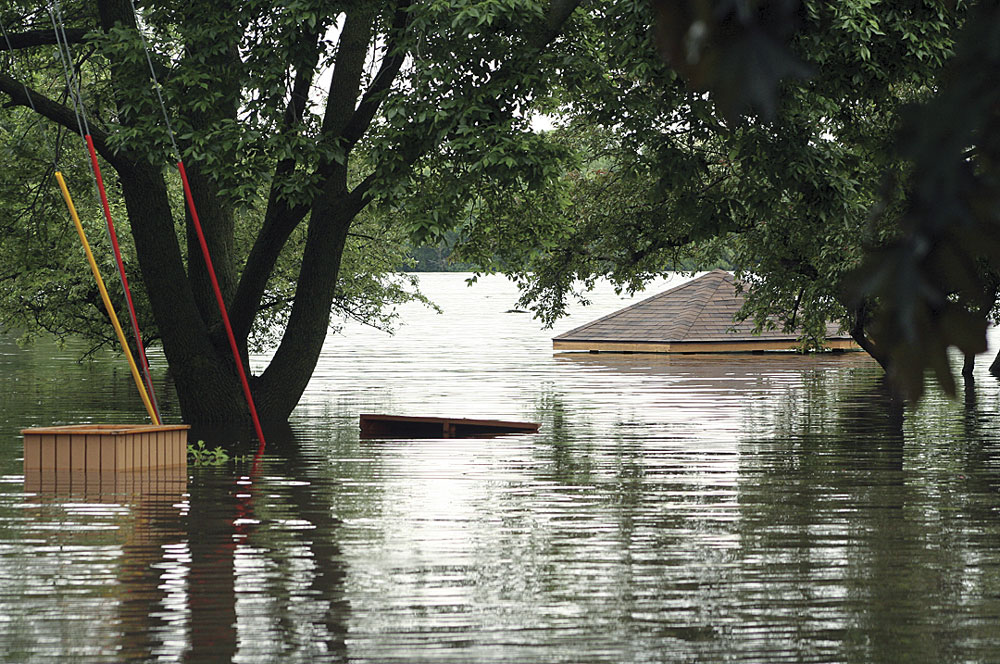
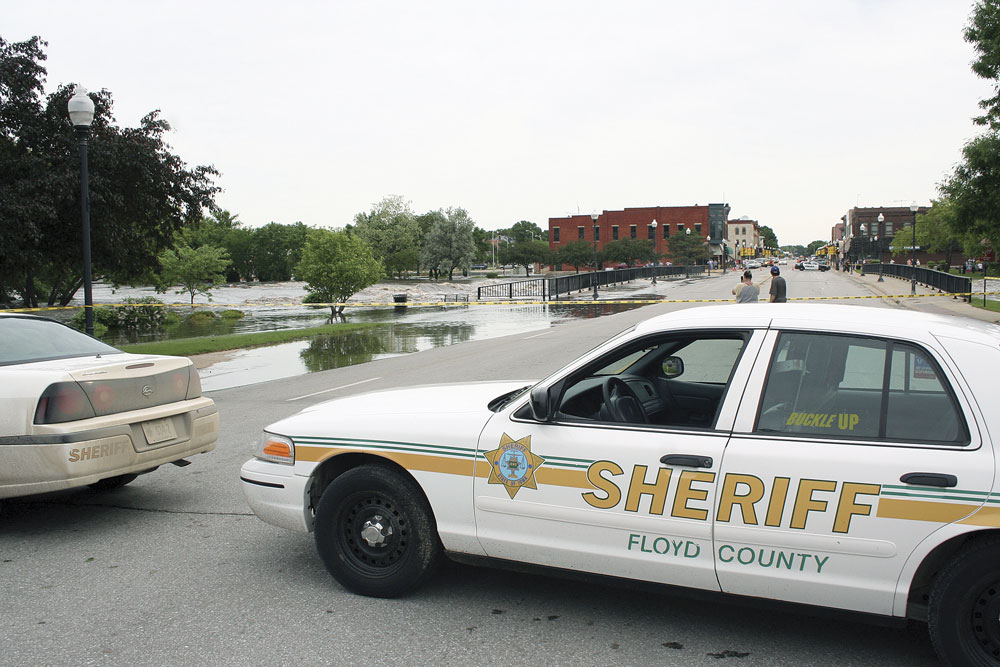
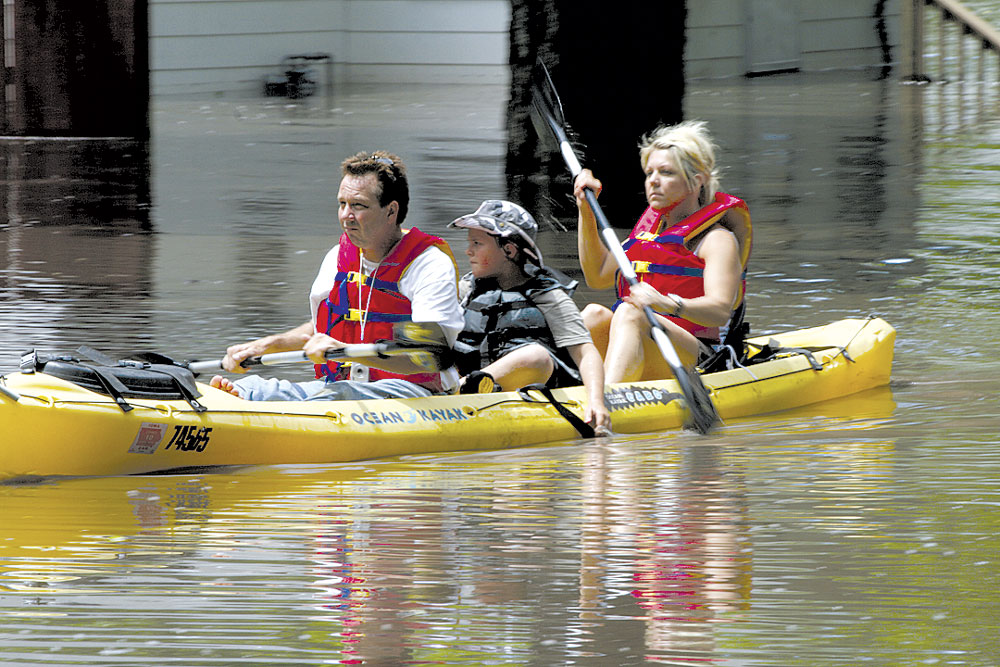
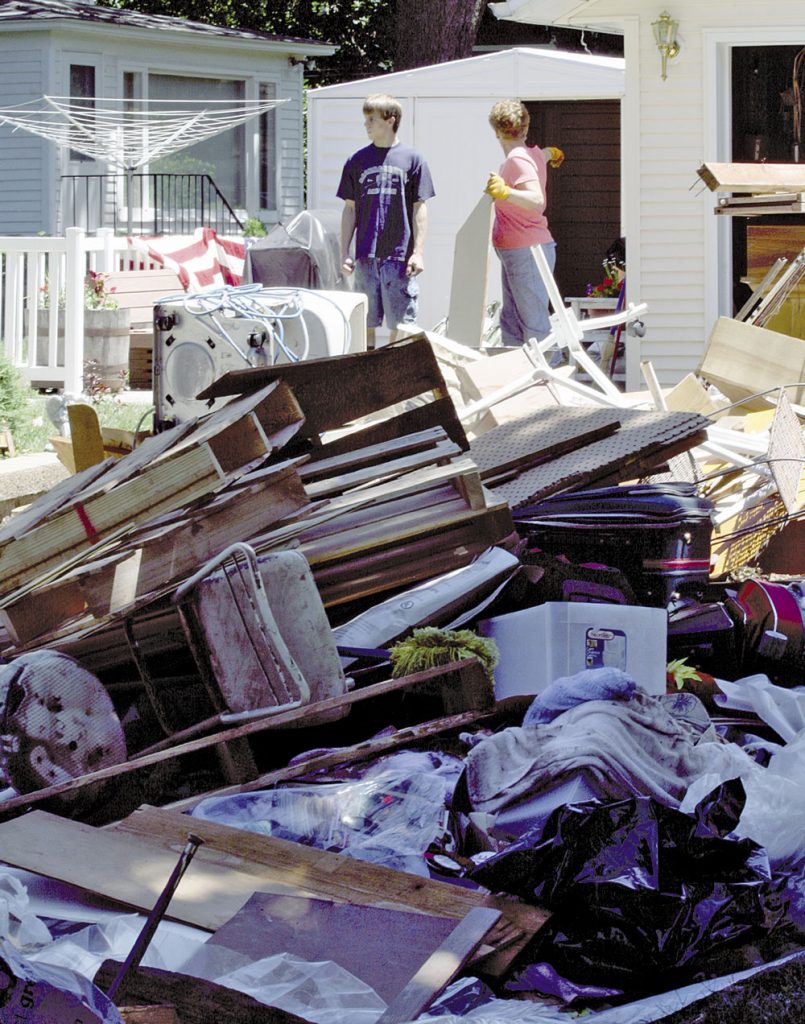
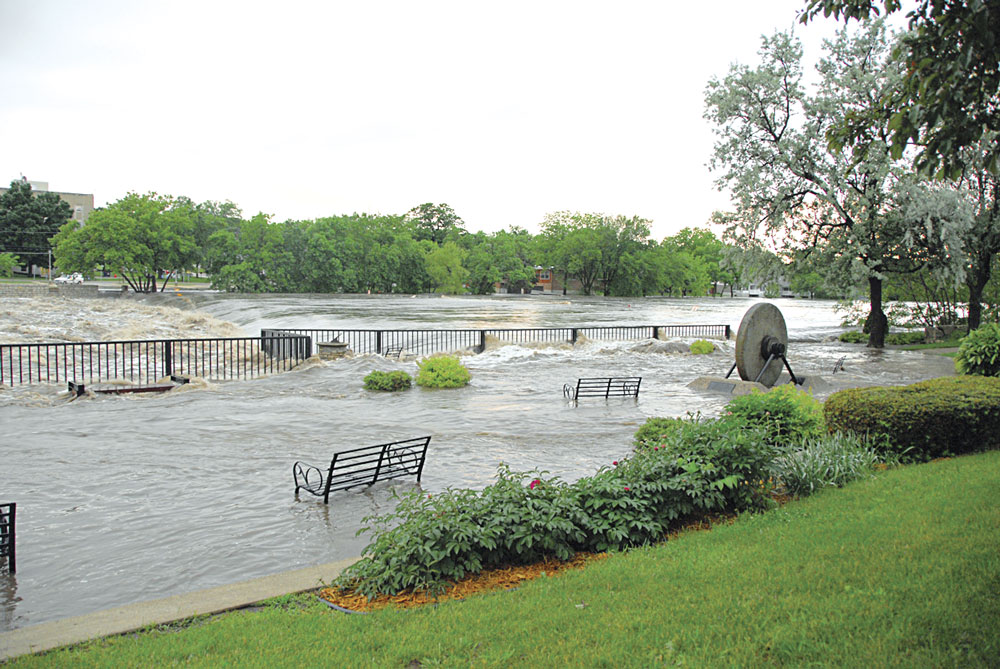
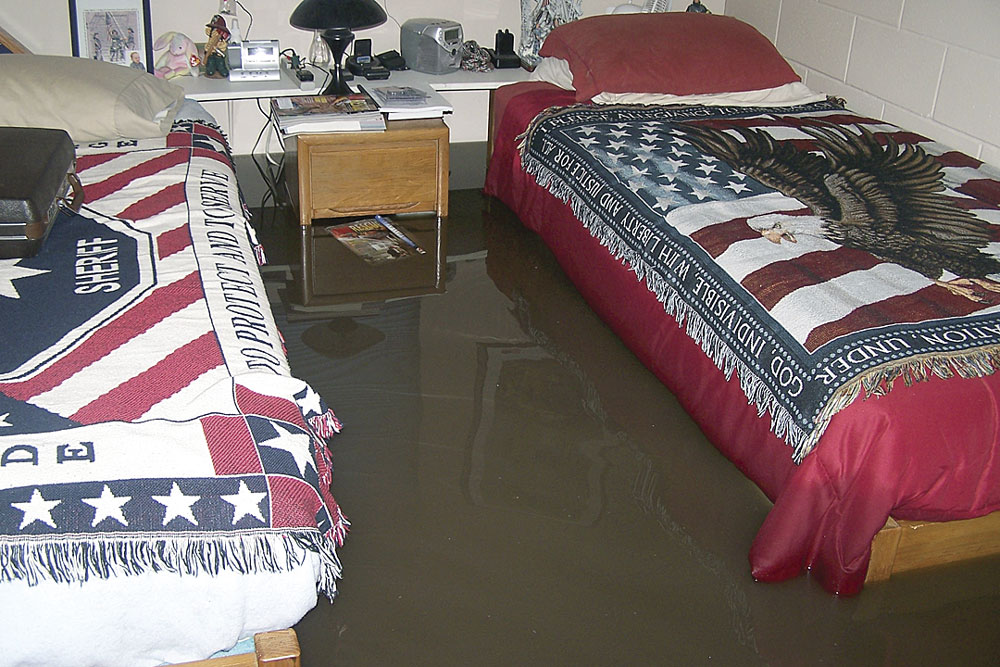
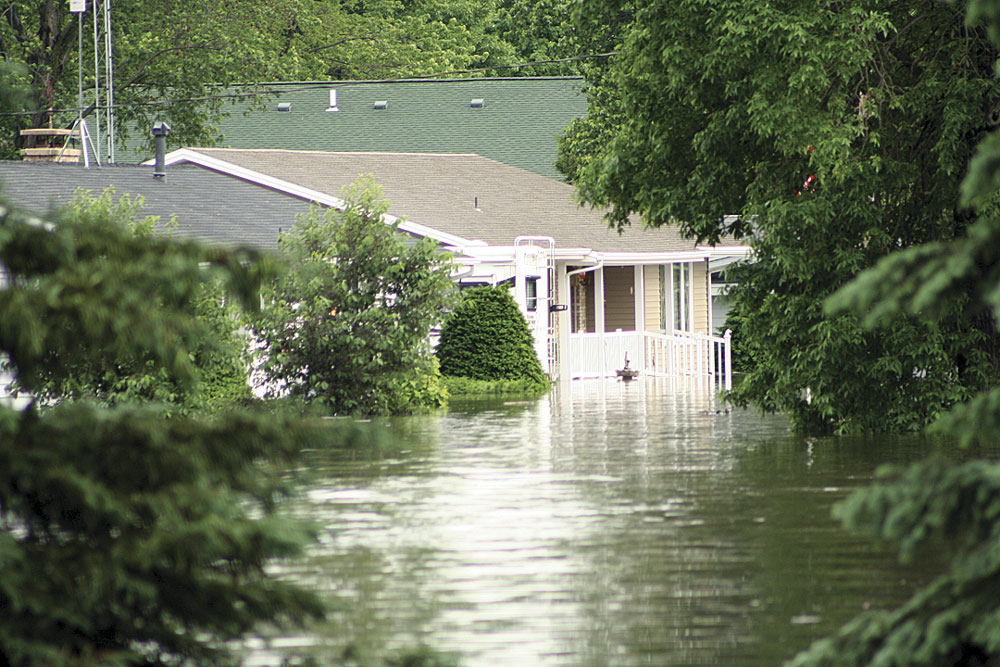
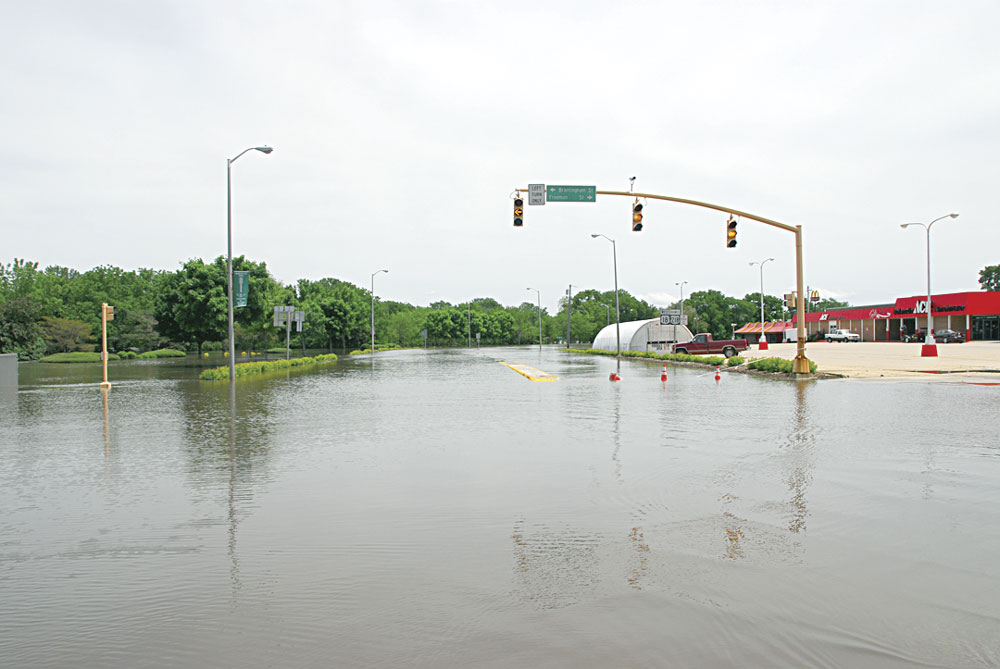
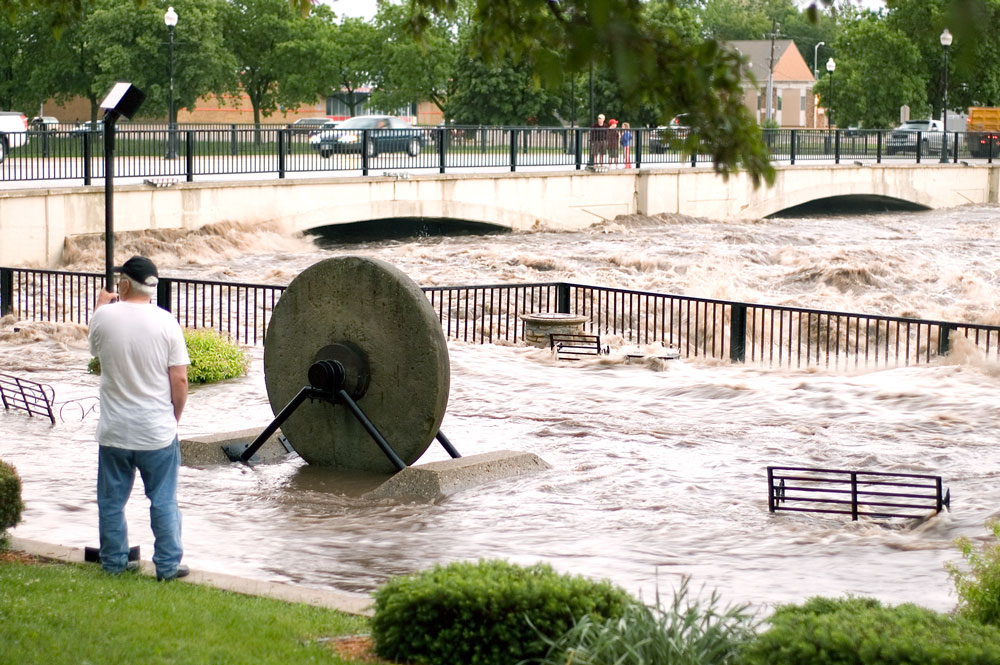
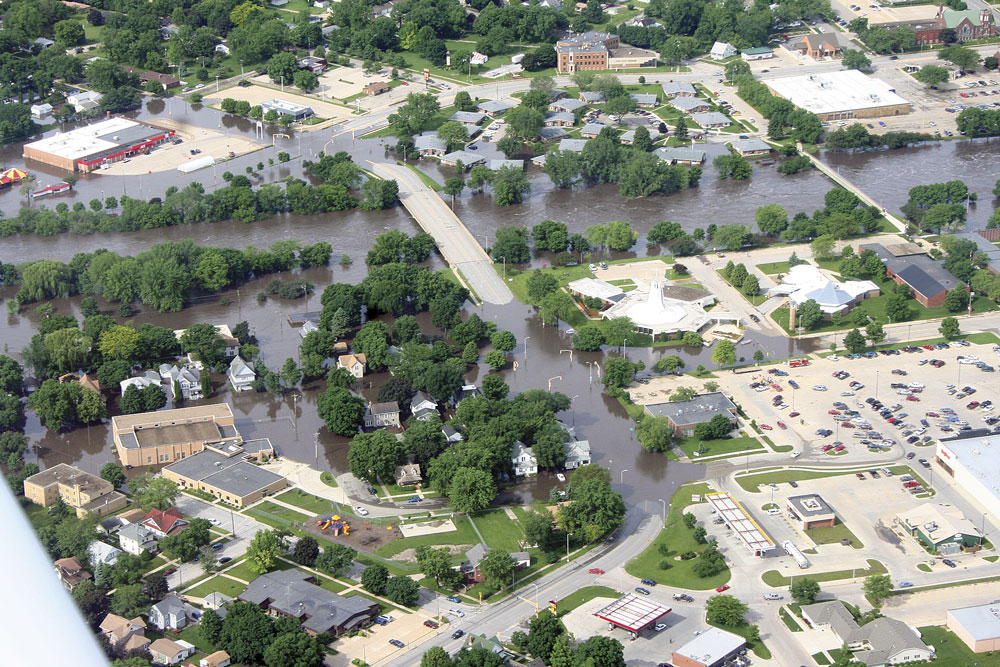

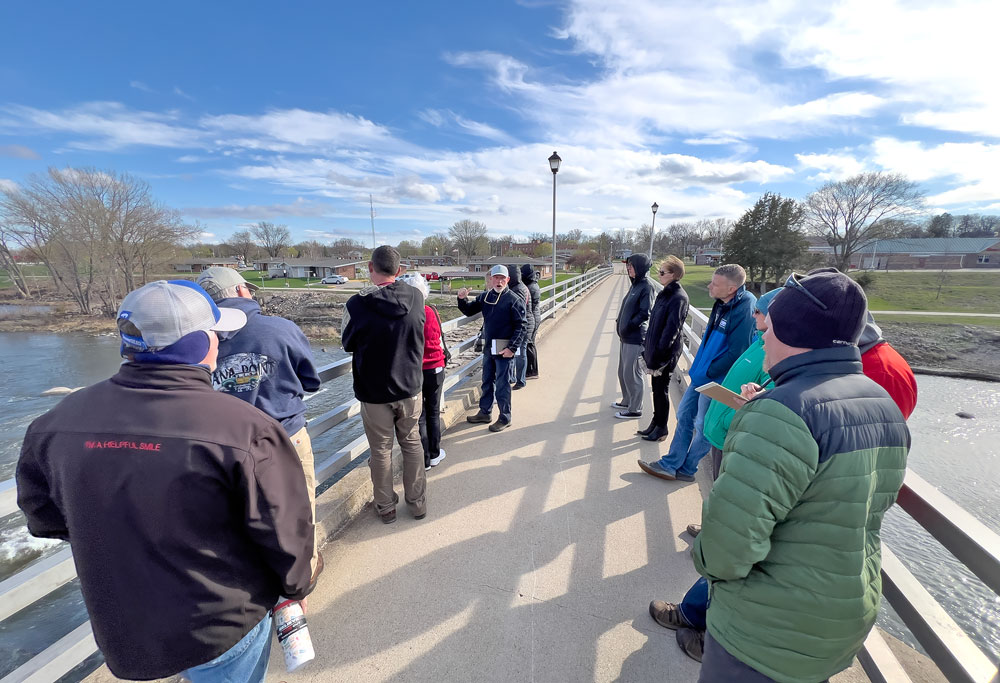




Social Share